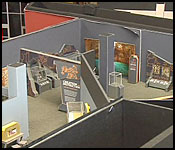
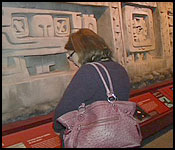
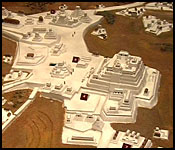
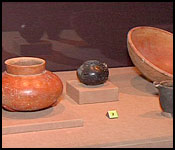
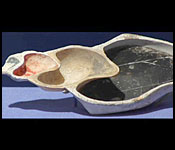
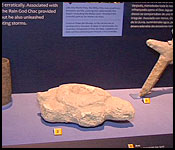
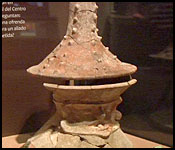
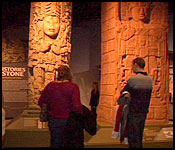 On Friday we took you to the Science Museum of Minnesota to show you part one of our story on the show called "Maya, Hidden Worlds Revealed." Even by north American standards, the show that cost four million dollars to put together is a major undertaking, and it's regarded as the largest and most comprehensive ever done on the Maya - and as we told you Belizean artifacts and research are a central part of that. Tonight we look more closely at how the show was set up and how Belize's precious artifacts are being preserved:..
On Friday we took you to the Science Museum of Minnesota to show you part one of our story on the show called "Maya, Hidden Worlds Revealed." Even by north American standards, the show that cost four million dollars to put together is a major undertaking, and it's regarded as the largest and most comprehensive ever done on the Maya - and as we told you Belizean artifacts and research are a central part of that. Tonight we look more closely at how the show was set up and how Belize's precious artifacts are being preserved:..
Paul Martin, Vice President, Exhibits
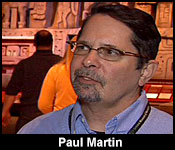 "I think this is probably the best exhibition we've done."
"I think this is probably the best exhibition we've done."
Jules Vasquez reporting
And the planning for it started here two years ago with this miniature 3 - D model where every element was created.
What you're seeing here is the ATM burial, re-created in miniature. Martin explains how it works:
Paul Martin, Vice President, Exhibits
"We see the relationships between these objects; the content, the feel of the space and the design and the atmosphere."
And what starts out small ends up life size. This is a painstakingly re-created life size replica of the frieze at Caracol.
Paul Martin, Vice President, Exhibits
"In other exhibitions on the Maya you don't really get a sense for the monumental scale of the sites and the amount of building and amount of size and of these cities that were created."
There's also a re-creation of the main plaza at Caracol and a Lidar map to show the population density at this city which one had more than a hundred thousand residents:
Liza Pryor, Lead Exhibit Developer
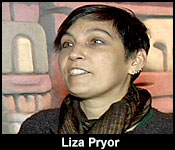 "Everybody loves the lidar maps that's over here on the floor and I think that was one of the biggest light bulbs for me. Just thinking about the density of population; how many people it took to produce a culture like this to make these monuments, to grow these foods, to produce this art, to weave this cloth, to do all the things that they were doing. It takes a lot of people."
"Everybody loves the lidar maps that's over here on the floor and I think that was one of the biggest light bulbs for me. Just thinking about the density of population; how many people it took to produce a culture like this to make these monuments, to grow these foods, to produce this art, to weave this cloth, to do all the things that they were doing. It takes a lot of people."
And the exhibit attempts to illuminate the inner worlds of these people:
Liza Pryor, Lead Exhibit Developer
"We knew what people really wanted to know; how did they keep track of time? Why did they keep track of time? How did they build? What did the regular people lived like? How were those paintings preserved? What do we find in all these tombs? We started from what we taught; people really wanted to know and covered a lot of basis and then try to make those things fit with the three worlds."
So the artifacts are presented in context, but they are also presented with extreme care.
Rebecca Newberry, Conservator
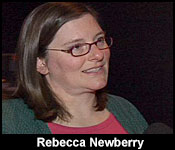 "There's a phrase that's in perpetuity, so when the museum accepts an artifact into its collection we agree to take care of that thing and keep it in the same condition forever."
"There's a phrase that's in perpetuity, so when the museum accepts an artifact into its collection we agree to take care of that thing and keep it in the same condition forever."
Like this recently unearthed inkwell from Cahal Pech, used by an artisan over a thousand years ago shown now for the first time:
Rebecca Newberry, Conservator
"The conch shell inkwell is incredible too because it has the pigment still in it. The fact that somebody thousands of years ago filled this with ink and used it and then it was lost and buried and then it was dug back up and it's essentially the same. That piece is incredible."
And while it may look brightly light, it isn't:
Rebecca Newberry, Conservator
"We set light limits on things like this case it looked like it's brightly lit but it's not. This gallery is very dark and so the case is with 5 foot candles, which we are reducing the amount of fading that could occur."
Those are just some of the precautions that are taken.
Sherilyne Jones from the Museum of Belize has to accompany the objects every time they are moved or touched - which means travelling by road with the items to each museum:
Rebecca Newberry, Conservator
"For the packing of these we have crates and inside the crates we have card board boxes and inside the boxes we have padding and foam and inside that we have more pad and more foams to ensure objects traveling. There are kind of cocoon in all of this padding and cushioning, so they won't be jarred or knocked over while they travel from venue to venue."
Jules Vasquez
"Are the objects safe?"
Sherilyne L. Jones, Director, Museum of Belize & Houses of Culture
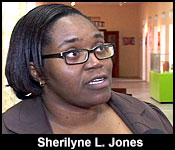 "Yes, I think pivotal to the entire loan agreement that we have signed Science Museum is the fact that the Museum of Belize or NICH; we are just care takers of these objects for the Belizean people and so it was very important for us that it is being taken care of. I can say that I am confident that they are safe. When you compare to the fact that they were in the dungeon - they are actually are in a better place in these museums than here."
"Yes, I think pivotal to the entire loan agreement that we have signed Science Museum is the fact that the Museum of Belize or NICH; we are just care takers of these objects for the Belizean people and so it was very important for us that it is being taken care of. I can say that I am confident that they are safe. When you compare to the fact that they were in the dungeon - they are actually are in a better place in these museums than here."
Still, prized, priceless national treasures such as the Buena Vista vase weren't in the dungeon, it was on display at the museum of Belize and it wasn't easy to part with:
Sherilyne L. Jones, Director, Museum of Belize & Houses of Culture
"It was a very difficult decision obviously because the fact that the pieces would be gone for such a long time. We also look at it for the exposure that it will bring to Belize and the Maya region."
Rebecca Newberry, Conservator
"By putting on exhibit, we are exposing them to risks, but we are also exposing them with so much more enrichment of our culture, so, it's like, in a way put that in the balance and make sure you are protecting them as much as possible."
And, now as viewers take the 90 minute walk through the seventeen thousand foot exhibit space, in the three years it will be on tour, about a million people will see it, which is a lot of eyeballs:
Jules Vasquez
"How do you think the Mayas made all these stuff?"
Charlie, Visitor
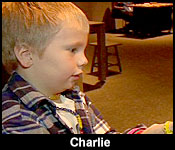 "With stone."
"With stone."
Jules Vasquez
"Yeah. Do you know they were so smart?"
Charlie, Visitor
"Yeah, they must be to make these."
CJ, Visitor
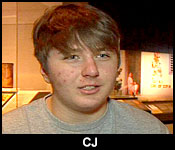 "It's funny because they make these monumental structures and nothing is erred, nothing is erred there. It's funny, it's just nice."
"It's funny because they make these monumental structures and nothing is erred, nothing is erred there. It's funny, it's just nice."
Martha Spencer, Visitor
"I've been to Teotihuacán, I've been to Chichen Itza so now I'd like to go to Palenque, I'd like to go to Copán, and I'd like to go to Caracol."
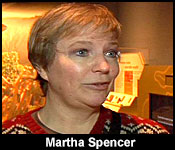 And while the tourists may come here, will the travelling exhibit ever make the trip? The faraway dream is that after this three year tour - which may be extended even beyond that - the pieces can come home and be displayed much like they have been here:
And while the tourists may come here, will the travelling exhibit ever make the trip? The faraway dream is that after this three year tour - which may be extended even beyond that - the pieces can come home and be displayed much like they have been here:
Liza Pryor, Lead Exhibit Developer
"I hope that after the tour some of these things go back to Belize and get on display there because this is how I wish they were shown in their home place too."
When the show is disassembled and moved to Denver in January, it will require 12 eighteen-wheelers with air suspensions to carry all the pieces to Denver.



